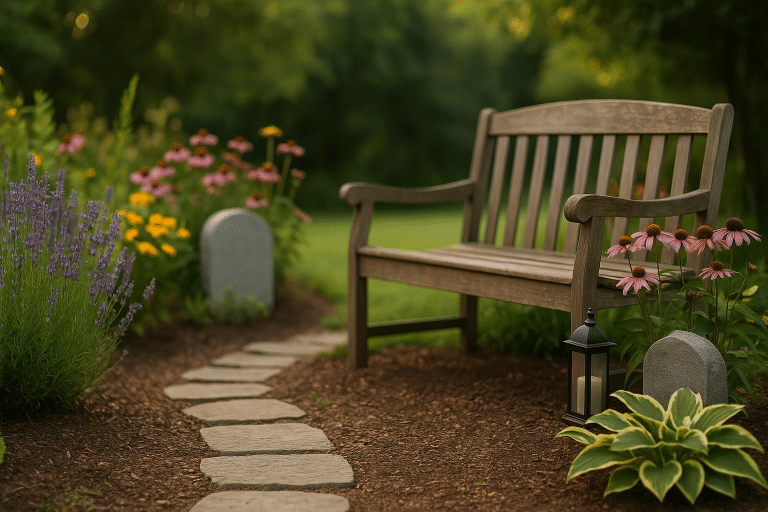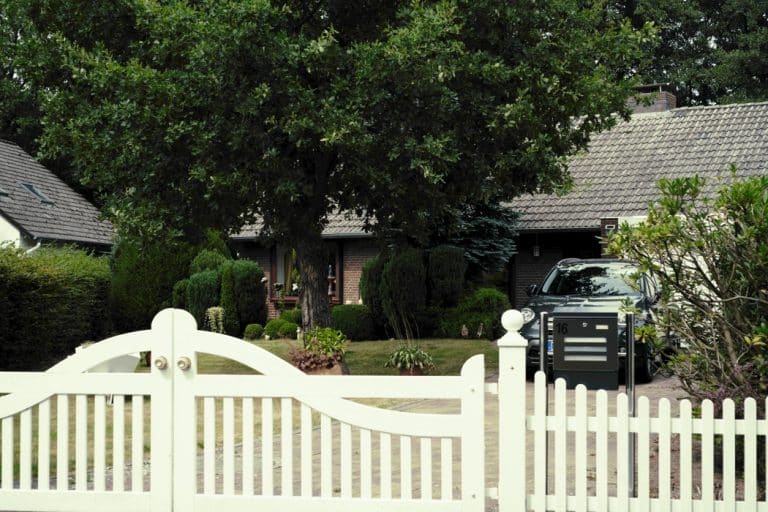Creating a memorial garden at home is more than arranging plants in a corner. It’s about carving out a quiet space where memories can breathe and grief has room to soften. Every stone, flower, and pathway can hold meaning, and that meaning lingers long after the soil settles.
A garden like this doesn’t need to be grand to be powerful. It can be as simple as a bench shaded by a tree or a bed of flowers that bloom each year on a special date. What matters most is that the space reflects the love you still carry.
And when you design it with intention, a memorial garden becomes more than a patch of green. It turns into a living tribute that comforts you daily. So let’s explore how you can create one that feels truly your own.
The Purpose of a Memorial Garden
A memorial garden gives grief a place to rest. It creates a space where sorrow can settle into something softer, and where love continues to live in the open. Instead of memories being tucked away, they’re given shape in flowers, pathways, and quiet corners that invite reflection.
Such gardens also provide a steady rhythm of care. When you plant, water, and watch things grow, you stay connected to the person you’ve lost in a gentle, ongoing way. It becomes a ritual of remembrance, not just a one-time act of grief.
While every garden looks different, the goal remains the same. It’s to honor memory while bringing peace to the living. As says Jeffrey Vaynberg, Co-Founder of Signature Headstones, the most meaningful tributes are often the simplest ones that hold personal significance.
How to Incorporate Symbols and Personal Touches
Symbols carry weight in a memorial garden because they speak without words. A single candle lantern can suggest hope. A wind chime can mark the presence of a loved one in the air. A favorite flower can stand for memories rooted deep. These elements transform the garden from a quiet green space into a living reflection of someone’s story.
Personal touches matter just as much. You might carve initials into a stepping stone or choose plants tied to a specific season in their life. Some people place a bench with an engraved line of poetry, while others tuck handwritten notes into a weatherproof box.
What makes these symbols powerful is not their cost or size but their meaning. So choose pieces that feel true to the person you’re remembering, and the garden will naturally feel like theirs.
Step-by-Step Guide to Creating Your Memorial Garden
Building a memorial garden can feel overwhelming at first, but breaking it into clear steps makes the process both practical and meaningful. Each stage, from preparing the soil to placing symbols of memory, gives you a chance to slow down and connect with the purpose of the space.
Because no two gardens are alike, these steps serve more as a gentle guide than strict rules. The goal isn’t perfection. It’s creating a place that feels personal, calming, and true to the person you want to honor.
Step 1: Clear and Prepare the Space
Every garden begins with the ground beneath it. Start by choosing a spot that feels calm, whether it’s a shaded corner of your yard or a sunny patch near a window. Then clear the space of weeds, rocks, or clutter so it feels like a blank canvas. This first step is simple, but it sets the tone. A clean, open area gives you the freedom to imagine what the garden could become.
Soften the soil if you plan to plant flowers or shrubs. Add compost or fresh topsoil to support growth. Even small spaces benefit from this kind of preparation, because healthy soil means lasting life. And while it may feel like basic groundwork, the act of clearing space is symbolic too. It’s a way of making room in your life for memory and peace.
Step 2: Design the Layout
Once the space is ready, pause to picture how you want it to feel. Do you imagine a winding path leading to a bench, or a single circular bed filled with blooms? Sketching a simple plan on paper can help, but walking the area and placing stones or markers is often more natural.
Think in layers. Taller plants or trees provide structure, while smaller flowers add color and softness. Leave room for movement, a pathway, stepping stones, or even a small clearing where you can sit. Besides, design isn’t about perfection. It’s about flow. Your layout should reflect the kind of calm you want to return to, so keep it personal and uncomplicated.
Step 3: Select and Plant Vegetation
Plants form the heart of any memorial garden. Choose flowers, shrubs, or trees that carry personal meaning, whether it’s a rose your loved one adored or a hardy oak that will stand tall for decades. Native plants are a wise choice because they thrive with less care and blend easily into the landscape.
Think about the seasons, too. A mix of perennials and annuals ensures the garden feels alive all year long. Spring bulbs can bring renewal, summer blooms add color, and evergreens keep the space grounded in winter. Besides, planting is more than decoration. It’s an act of care that mirrors memory itself, something you return to, nurture, and watch grow.
Step 4: Add Decorative and Memorial Elements
Once the plants are in place, it’s time to weave in pieces that give the garden its deeper meaning. A simple bench invites quiet moments. A stone path offers direction and ritual. Water features, lanterns, or bird feeders can bring movement and sound, making the space feel alive.
Memorial elements like engraved stones, plaques, or statues hold personal weight. You don’t need many; even a single object placed with intention can anchor the space. These details show that the garden goes beyond appearance. It becomes memory made visible, something that stays with you.
Maintaining the Garden Over Time
A memorial garden isn’t something you finish once and walk away from. It’s alive, and like memory itself, it changes with the seasons. That’s why simple, steady care matters more than perfection. Watering during dry spells, trimming plants before they overgrow, and clearing leaves are small actions, but each one keeps the space open and welcoming.
Maintenance also gives you moments to reconnect. Pulling a weed or planting fresh bulbs can bring back a flood of memories without you even trying. Besides, these acts of care help the space grow with you, shifting as life moves forward.
Over time, you may add a new flower, replace a bench, or move a stone. Those changes don’t erase what came before. They show that remembrance is ongoing, just like the garden itself.
Conclusion
A memorial garden doesn’t have to be large or complicated to hold meaning. What matters is the thought you put into it and the care you give it over time. By choosing symbols, plants, and personal touches that feel right, you create a space that speaks to your own story of remembrance.
Besides offering comfort, the garden also becomes part of your daily life. It’s a place to pause, reflect, and return whenever you need a quiet moment. And because it grows and shifts with the seasons, it reminds you that memory can live on in new forms.
So when you step into your garden, you’re stepping into more than soil and flowers. You’re entering a space built from love, and that’s what makes it lasting.













